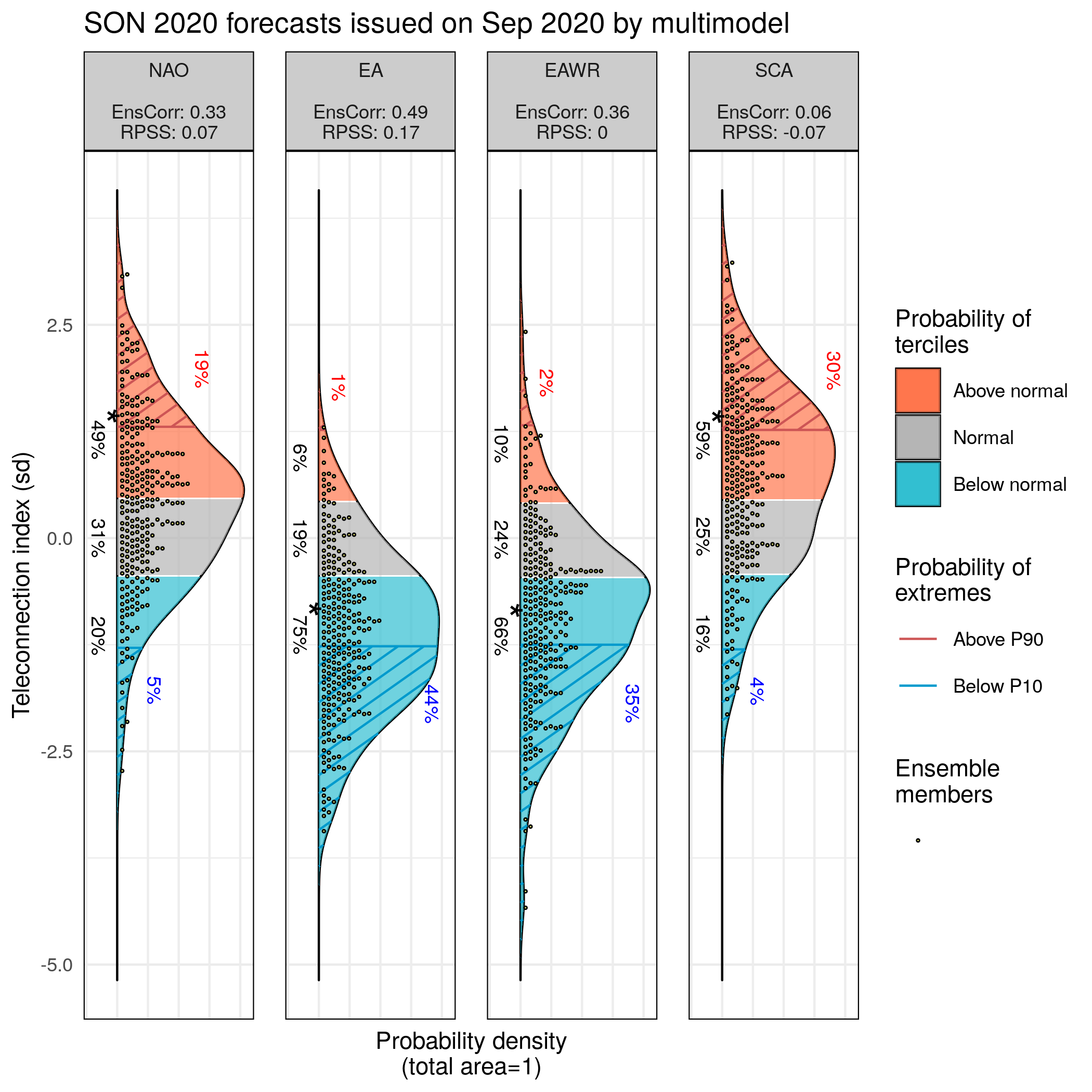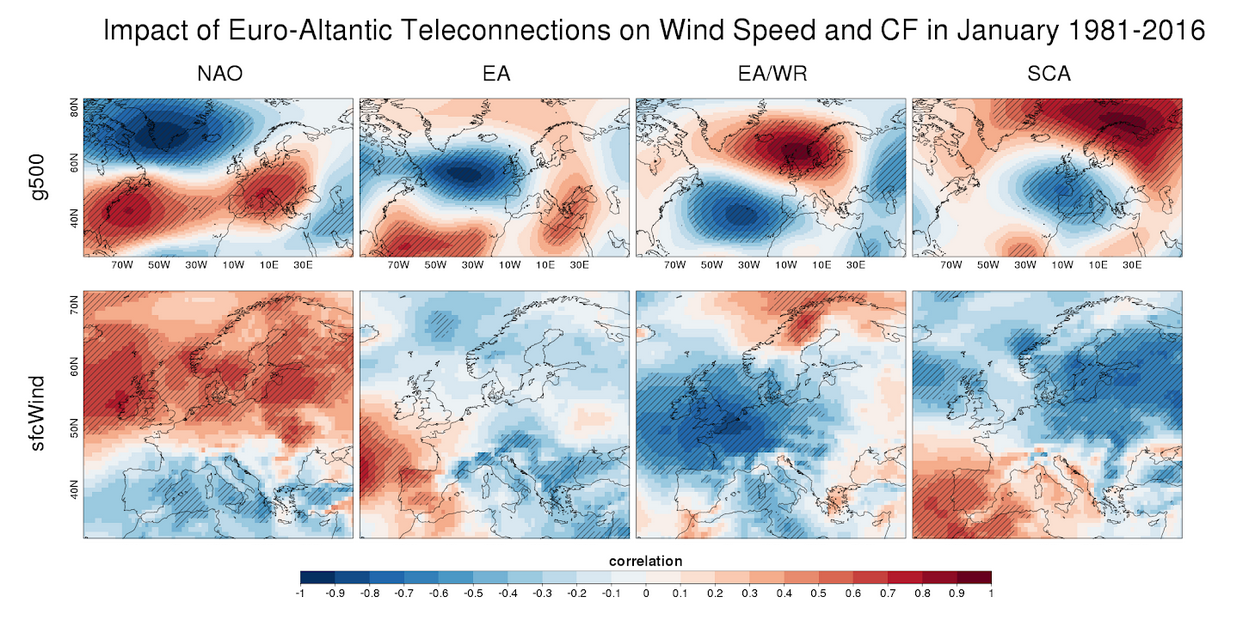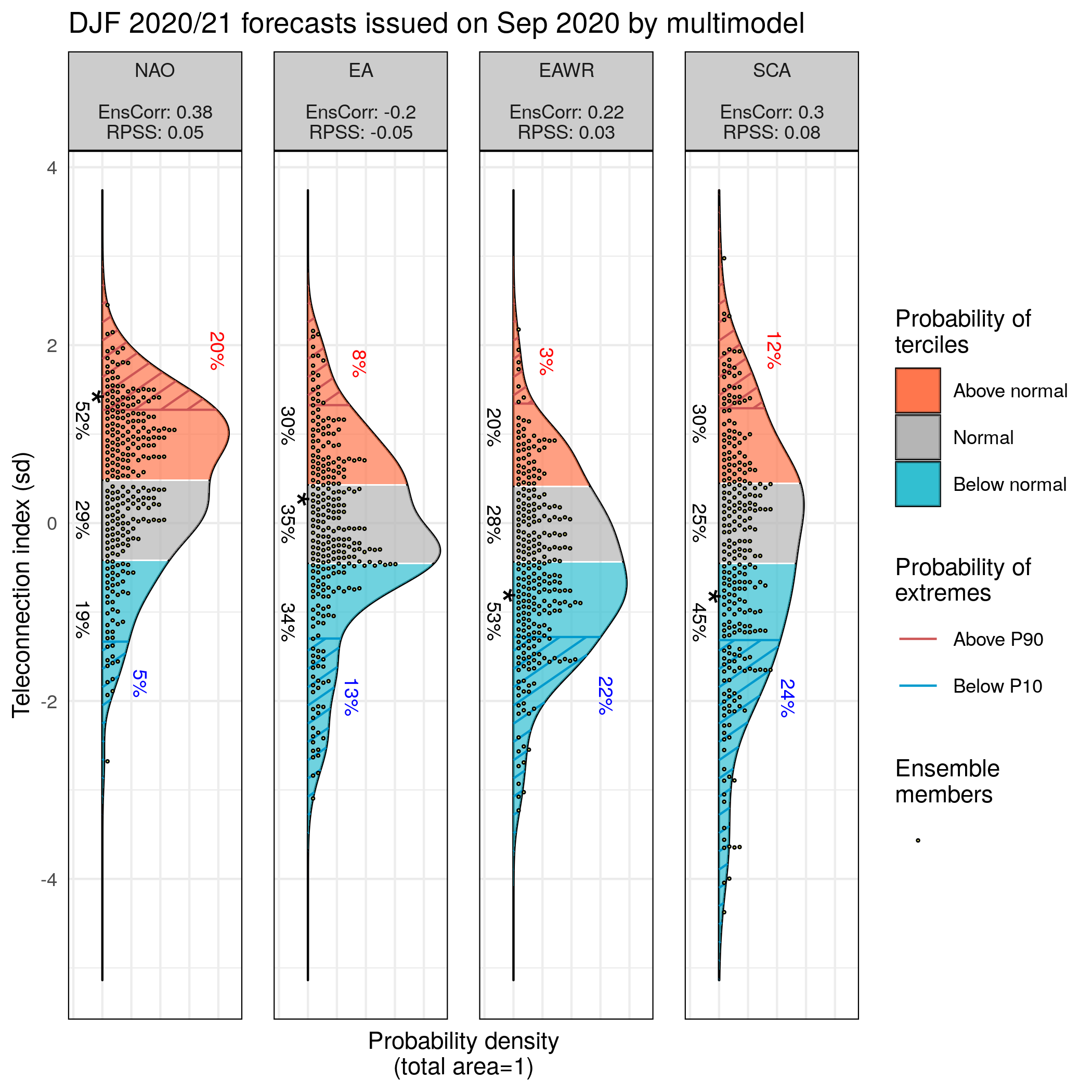Seasonal forecasts for autumn and winter 2020 predict strong anomalies in four teleconnections affecting the European atmospheric circulation and the whole electricity system.
The state of the atmospheric circulation in Europe during a whole season can be summarized by four teleconnection indices: the North Atlantic Oscillation (NAO), the East Atlantic (EA), the East Atlantic/West Russia (EAWR) and the Scandinavian pattern (SCA). Understanding these teleconnections and how this can help improve seasonal forecasts has been the subject of research conducted as part of the S2S4E project.
Seasonal forecasts issued in September by five prediction systems show high probabilities of a positive NAO and a negative EA for this autumn, with a high skill. Additionally, there are high probabilities of a negative EAWR and a positive SCA, although the forecasts for these teleconnections were not found to be skillful when evaluated in a retrospective analysis.

Figure 1. Autumn (September, October and November) forecasts of NAO, EA, EAWR and SCA teleconnection indices. The forecasts combine information from five prediction systems that were initialised in September. The ensemble mean correlation and Ranked Probability Skill Scores show the quality of the forecasts assessed in a retrospective analysis.
Multi-model predictions deliver more robust results
The teleconnection forecasts were produced by combining five seasonal prediction systems available from the Copernicus Climate Change service: ECMWF SEAS5, MeteoFrance System7, UKMO System15, CMCC SPS3 and DWD System2. Each of these systems represents the physical process of the Earth system in slightly different ways. By combining all the predictions together, modelling errors in each system are smoothed out, making the predictions more robust, since only the signals that are present in most of the prediction systems remain in the multi-model forecast. The whole methodology behind these predictions was described in a recent study, signed by S2S4E researchers.
Sharp and skillful forecasts are actionable
The forecasts are presented in the form of tercile probabilities, which account for the probability of a teleconnection index to be in the above normal, normal or below normal range (with the normal range defined according to past observations). Forecasts in which the ensemble members show a high concentration of probabilities in one of the categories are said to be sharp. This is the case, for instance, for the EA forecast, which shows a 75% probability of being in the below normal category. The sharpness of this specific forecast, combined with its relatively high skill score (a ranked probability skill score of 17%) means that this is a very actionable forecast that can be useful in decision making. The strong signal in these forecasts is probably related to a negative El Niño-Southern Oscillation phase.
Winter forecasts anticipate a windy season in central and northern Europe
Euro-Atlantic teleconnection forecasts can be of relevance to the wind energy industry, because the phases of these teleconnections are related to wind speed anomalies in Europe.

Figure 2. Historical wind speed anomalies associated with each teleconnection index in January are shown in the second row by means of a correlation. The top row shows the 500 hPa geopotential height correlation patterns.
The forecasts for the coming winter still show a preference for a positive phase of the NAO, combined with negative phases of the EAWR and the SCA. In winter, positive phases of the NAO are associated with enhanced wind speed conditions in the north of Europe. The negative phases of the EAWR and SCA could also bring strong winds to the center and east of the continent (see Section 4.1 of S2S4E Deliverable 3.2). According to these teleconnection forecasts, the Mediterranean areas will probably experience low wind speed conditions.

Figure 3. Winter (December, January and February) forecasts of NAO, EA, EAWR and SCA teleconnection indices. The forecasts combine information from five prediction systems that were initialised in September. The ensemble mean correlation and Ranked Probability Skill Scores show the quality of the forecasts assessed in a retrospective analysis.
Study discussed in the article: Lledó L., Cionni C., Torralba V., Bretonnière P.A. and Samsó M. (2020). Seasonal prediction of Euro-Atlantic teleconnections from multiple systems. Environmental Research Letters 15 (7). DOI: 10.1088/1748-9326/ab87d2
Written by Llorenç Lledó and Andria Nicodemou (BSC)


